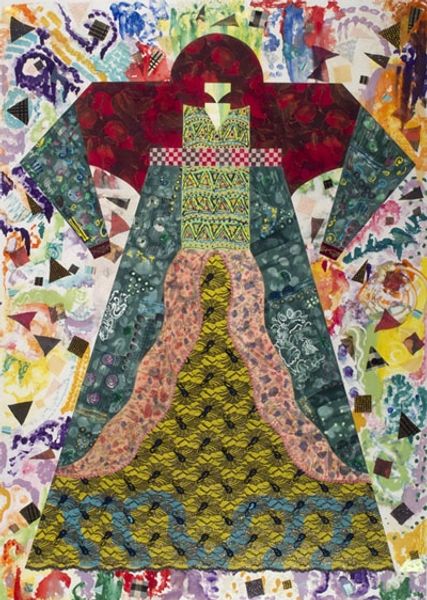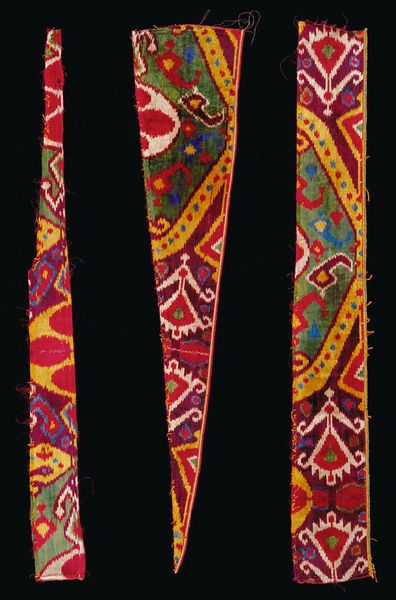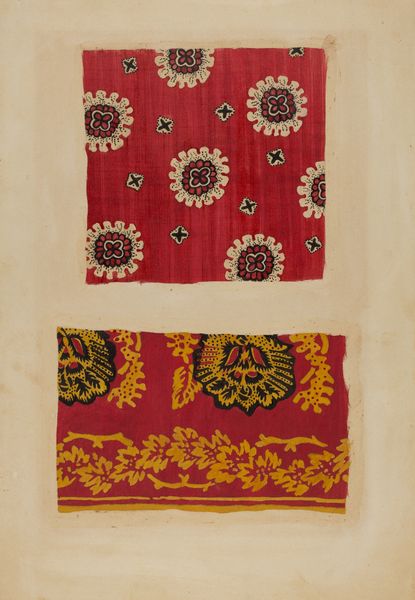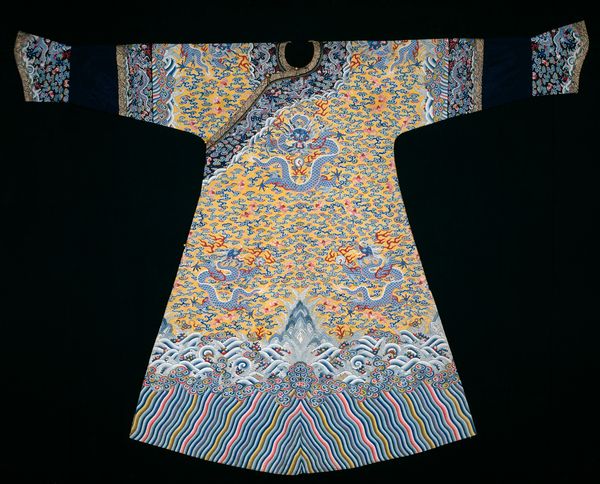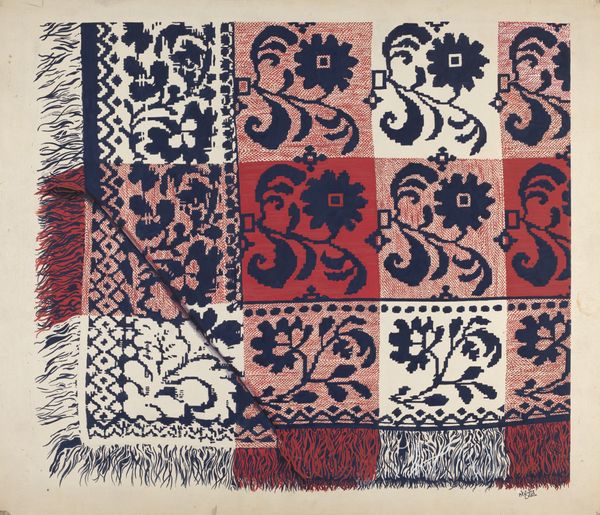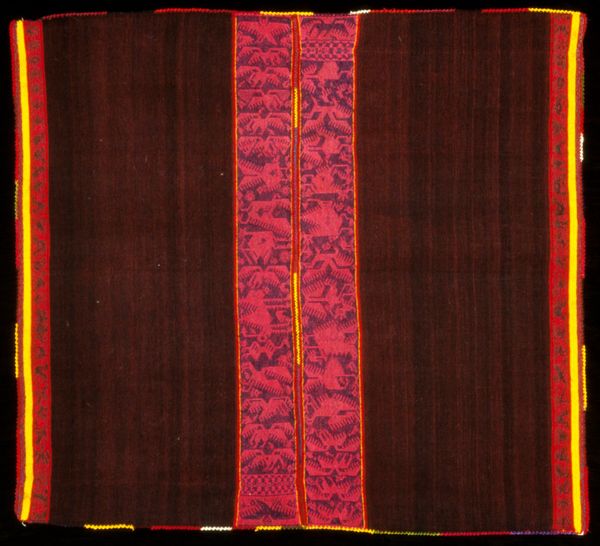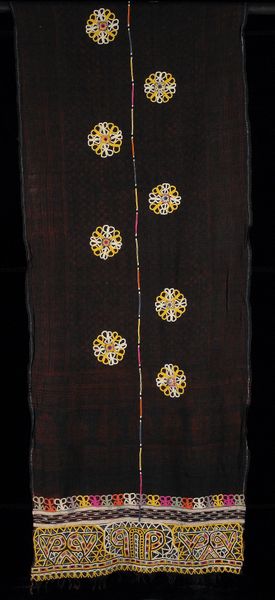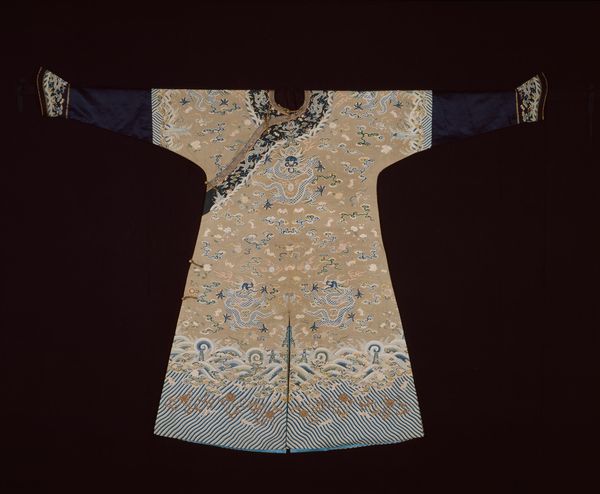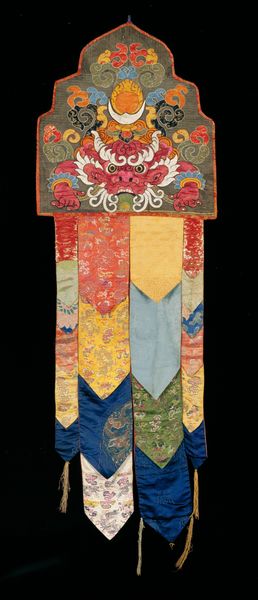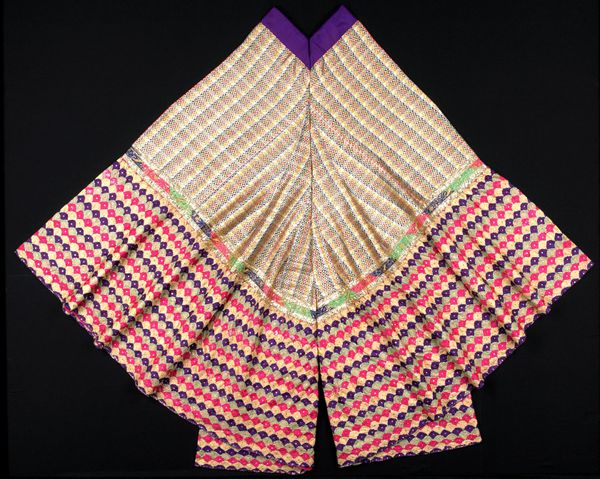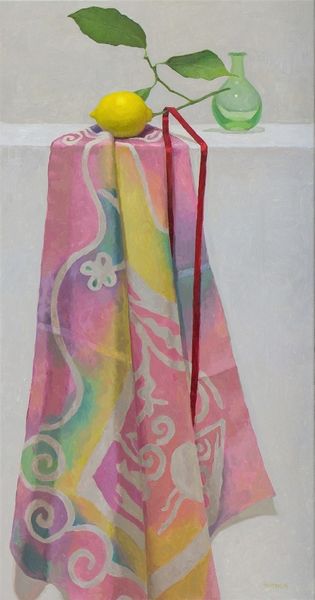
silk, textile
#
silk
#
textile
#
geometric pattern
#
textile design
#
decorative-art
Copyright: Public Domain
Curator: The Minneapolis Institute of Art holds in its collection an exquisite "Woman's Coat" dating back to the 19th century, created by an anonymous artist. This striking garment features cotton, silk, and gold, meticulously worked into a rich tapestry. Editor: My immediate impression is that of a vibrant yet strangely dissonant symphony. The boldness of the patterns—a marriage of floral and geometric forms—almost feels intentionally overwhelming. I am eager to dive deeper. Curator: Indeed, let’s examine the materiality itself. The shimmering silk threads, intertwined with gold, immediately suggest status and wealth, illuminating the craftsmanship. Consider also how the geometric patterns in contrast with organic shapes create rhythm and dissonance. Editor: And how that wealth might signify privilege – who wore this coat, and within what power structures? We should contextualize its presence; this wasn’t just any body covering. Textile patterns from this era can carry codes linked to region, family lineage, political leanings, even marital eligibility. Who was this woman declaring herself to be? Curator: Such interpretations of power are vital but notice how the symmetry functions on its own as the coat displays the intricate balance in the visual design itself. The textiles chosen play off each other formally with tone and form. Editor: Balance perhaps hides some inherent conflict. A decorative facade rarely lacks sociopolitical weight, even now. Curator: What fascinates me is that its creation is truly, utterly lost in the archives, only preserved in its artistry. The hands that stitched this material together left nothing behind. Editor: But perhaps this is precisely what is so powerful – the nameless artisan's labor rendered into art, speaking across centuries, albeit encrypted to us without proper socio-historic research. We have to start there, to know what it truly means. Curator: Precisely, the enduring formal power rests both in design and in the echoes of these long lost artisans. Editor: Ultimately, this garment makes visible how class, gender, and artistry can all become entwined in a single piece of clothing—a conversation starter across time.
Comments
minneapolisinstituteofart almost 2 years ago
⋮
This luxurious coat presents a constellation of Islamic aesthetic traditions and religious symbols but combined in ways that make it difficult to tell a clear story about its origins or intended use. It was possibly created for a Muslim patron, but was acquired in Moscow on behalf of a Philadelphia-based department store magnate in 1917, in keeping with international demand for ‘Islamic’ aesthetics in the first half of the 1900’s—a period when many of the works in this gallery entered Mia’s collection. The outer layer is embroidered with scrolling velvet vines and flowers, often associated with Islamic ornament; however, the gold ground is more in the spirit of European taste. Meanwhile, the wave-pattern which forms the edge of the inner lining looks like handwoven Uzbek ikat textile but is in fact factory-produced fabric made in Russia for the Central Asian market. The designer of this coat further included the star and crescent motif, an ancient symbol which was incorporated onto the flag of the Ottoman Empire (1299-1922) in 1844, and thereafter became an icon of Islam in both Muslim and non-Muslim contexts.
Join the conversation
Join millions of artists and users on Artera today and experience the ultimate creative platform.

